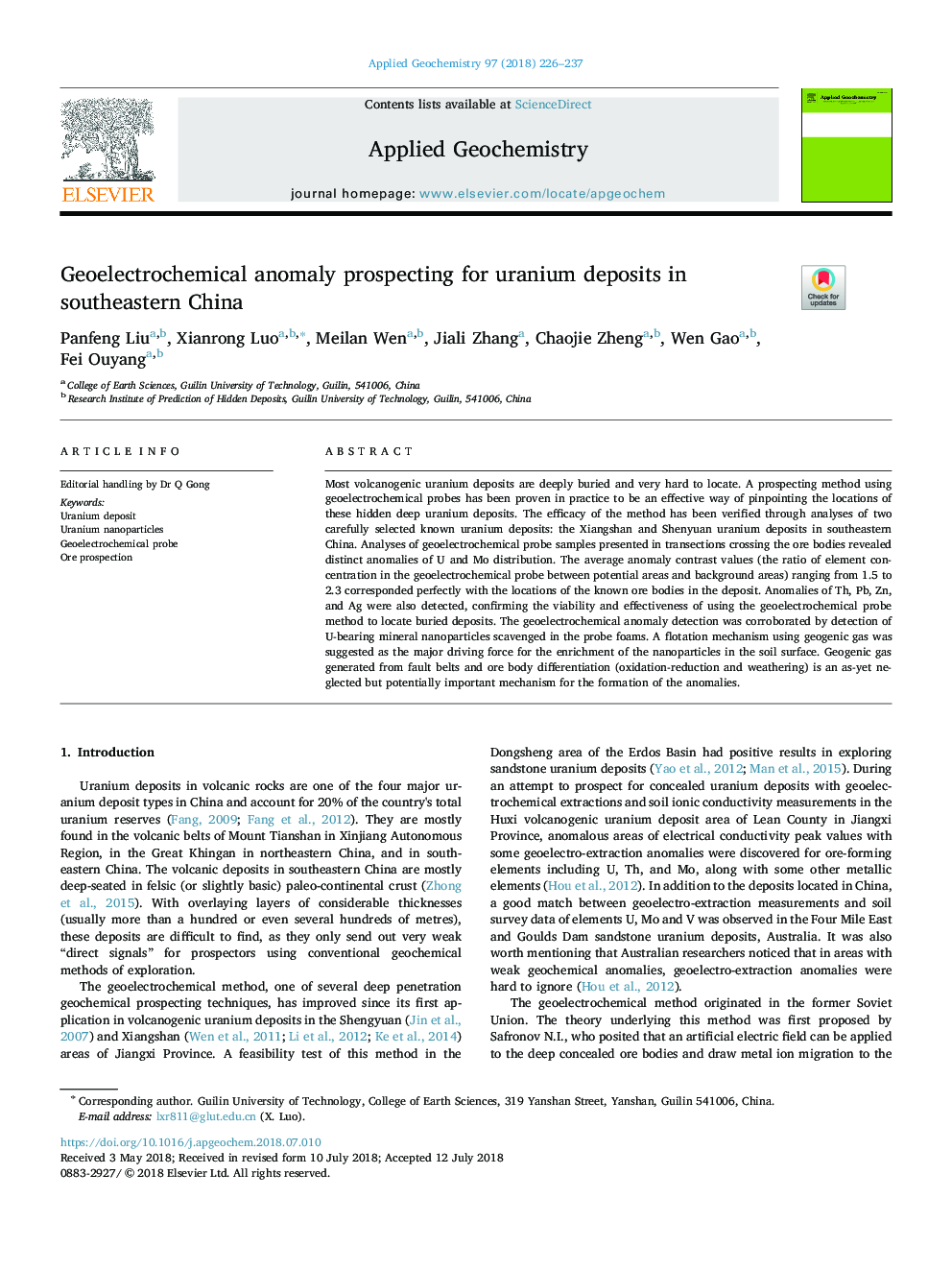| Article ID | Journal | Published Year | Pages | File Type |
|---|---|---|---|---|
| 10113910 | Applied Geochemistry | 2018 | 12 Pages |
Abstract
Most volcanogenic uranium deposits are deeply buried and very hard to locate. A prospecting method using geoelectrochemical probes has been proven in practice to be an effective way of pinpointing the locations of these hidden deep uranium deposits. The efficacy of the method has been verified through analyses of two carefully selected known uranium deposits: the Xiangshan and Shenyuan uranium deposits in southeastern China. Analyses of geoelectrochemical probe samples presented in transections crossing the ore bodies revealed distinct anomalies of U and Mo distribution. The average anomaly contrast values (the ratio of element concentration in the geoelectrochemical probe between potential areas and background areas) ranging from 1.5 to 2.3 corresponded perfectly with the locations of the known ore bodies in the deposit. Anomalies of Th, Pb, Zn, and Ag were also detected, confirming the viability and effectiveness of using the geoelectrochemical probe method to locate buried deposits. The geoelectrochemical anomaly detection was corroborated by detection of U-bearing mineral nanoparticles scavenged in the probe foams. A flotation mechanism using geogenic gas was suggested as the major driving force for the enrichment of the nanoparticles in the soil surface. Geogenic gas generated from fault belts and ore body differentiation (oxidation-reduction and weathering) is an as-yet neglected but potentially important mechanism for the formation of the anomalies.
Keywords
Related Topics
Physical Sciences and Engineering
Earth and Planetary Sciences
Geochemistry and Petrology
Authors
Panfeng Liu, Xianrong Luo, Meilan Wen, Jiali Zhang, Chaojie Zheng, Wen Gao, Fei Ouyang,
